A Face That Fooled the World, A Legacy That Outshone Imitation
There’s something magnetic about vintage Hollywood glamour. Think bold red lips, pin-curled hair, and a stare that could stop traffic. Now imagine a woman who embodied all of that—but wasn’t Marilyn Monroe. For decades, people swore they were seeing Marilyn when in fact, they were looking at Arline Hunter—a woman with the same sultry charm, but a story that was entirely her own.
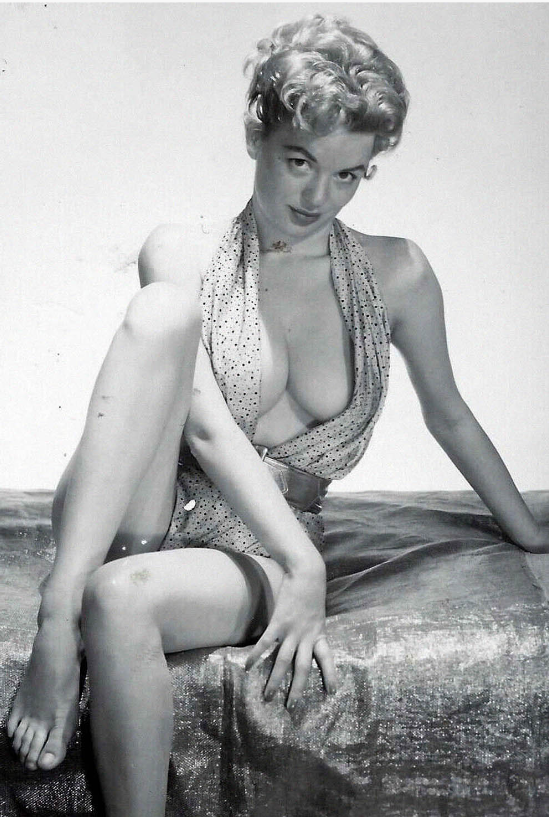
She wasn’t just another pretty face in the golden age of Hollywood. Arline was a pioneer in her own right—one of the earliest icons to turn sex appeal into screen presence, to own her image, and to walk away on her own terms. If you’ve never heard of her, it’s time to change that.
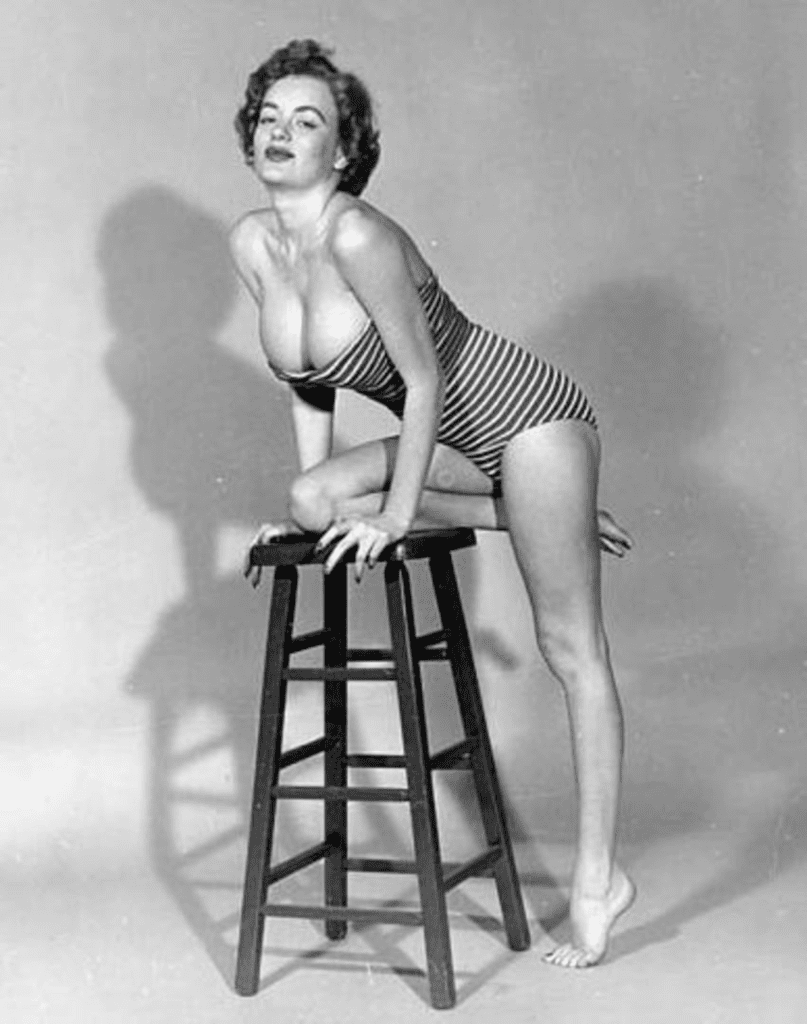
Small Town Girl with Big Dreams
Arline Hunter was born Arlene Joan Hunter on December 16, 1931, in Caldwell, Idaho. Her beginnings were humble—more barns than billboards—but even as a child, her natural beauty stood out. With blonde hair, a heart-shaped face, and a magnetic presence, she didn’t need makeup or lighting to shine.
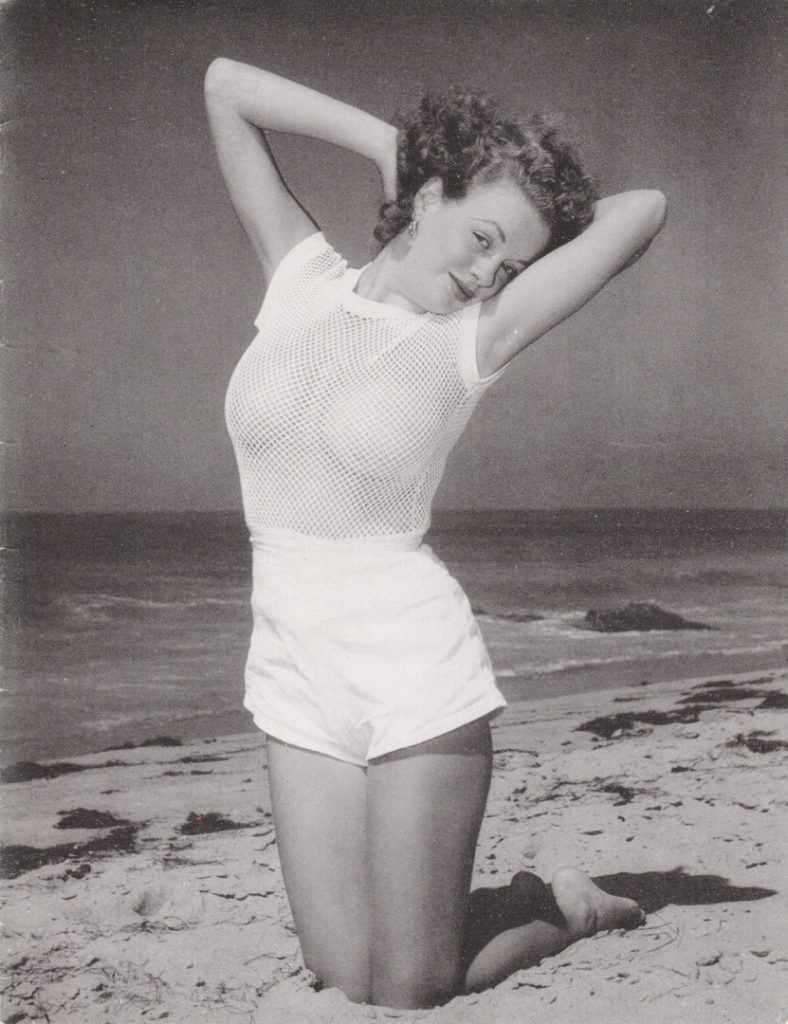
By her late teens, Arline was already drawing comparisons to Marilyn Monroe—long before the two were ever photographed side by side. When she moved to California, it wasn’t fame she chased, but opportunity. Her early jobs in modeling came quickly, and in 1954, she posed for a magazine spread that would set the tone for the rest of her career.
Video : North to Alaska (1960) Trailer | John Wayne | Stewart Granger
The Photoshoot That Launched a Legend
That now-iconic photoshoot—often mistaken for a Monroe session—was photographed by Ed DeLong and echoed the seductive elegance of Marilyn’s 1949 images. But Arline wasn’t copying anyone. Her style was natural, effortless, and distinct. The resemblance to Monroe was a coincidence—one she embraced, but never relied on.
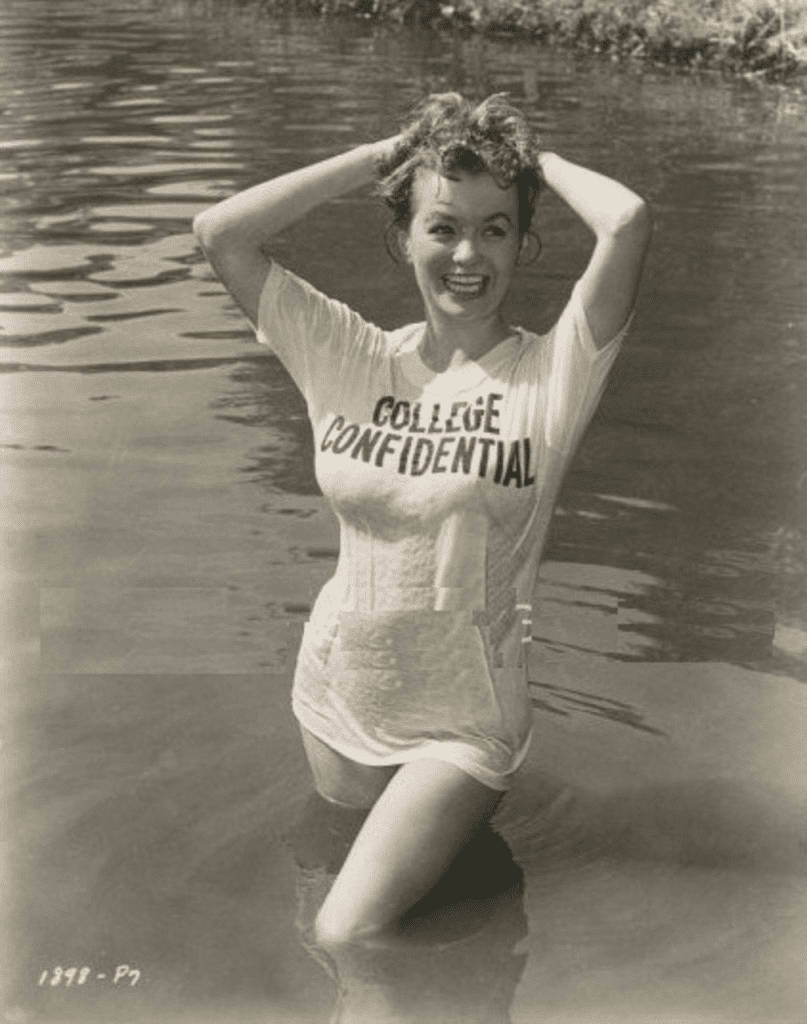
The shoot catapulted her into the public eye, and soon Arline was gracing covers, starring in short films, and making waves in a world that wasn’t always kind to women who dared to be both sexy and smart.
More Than a Look-Alike: Building Her Own Hollywood Identity
Arline Hunter didn’t just resemble a legend—she became one in her own right. In the late 1940s and into the ’50s and ’60s, she appeared in a series of short films and B-movies that gained cult status. Her role in The Apple-Knockers and the Coke (1948) raised eyebrows due to its provocative nature, leading many to believe it was Marilyn on screen. Spoiler: it wasn’t.
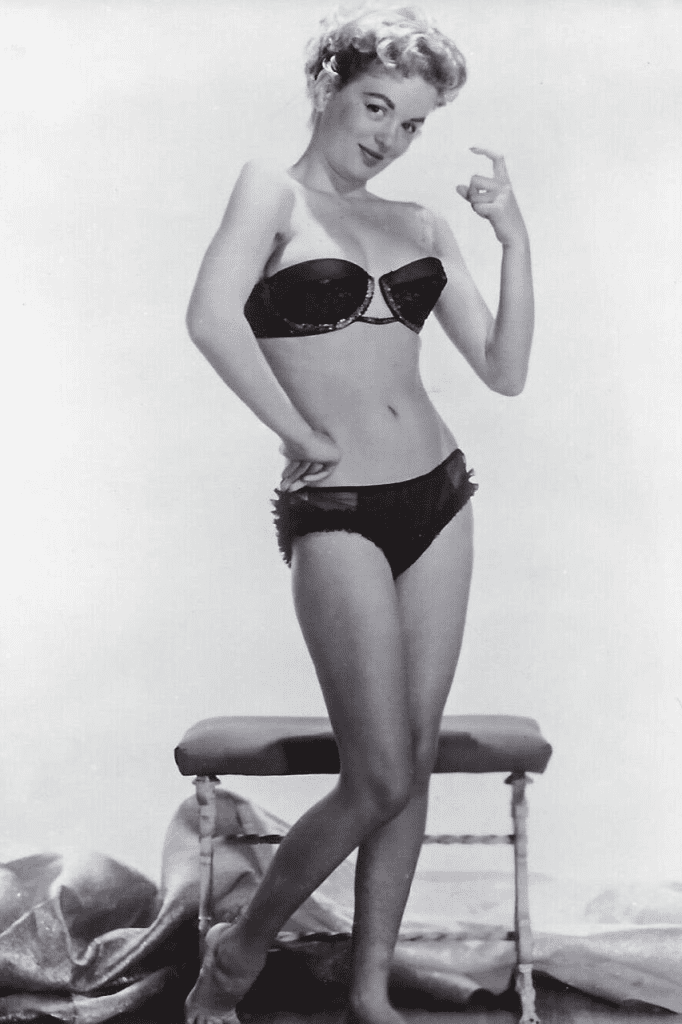
She starred in quirky, offbeat films like White Lightnin’ Road (1967) and The Art of Burlesque, where she brought sultriness and playfulness in equal measure. But she wasn’t limited to one note. In 1957, she joined the Three Stooges in Outer Space Jitters, proving she had a gift for comedy and wasn’t afraid to poke fun at herself.
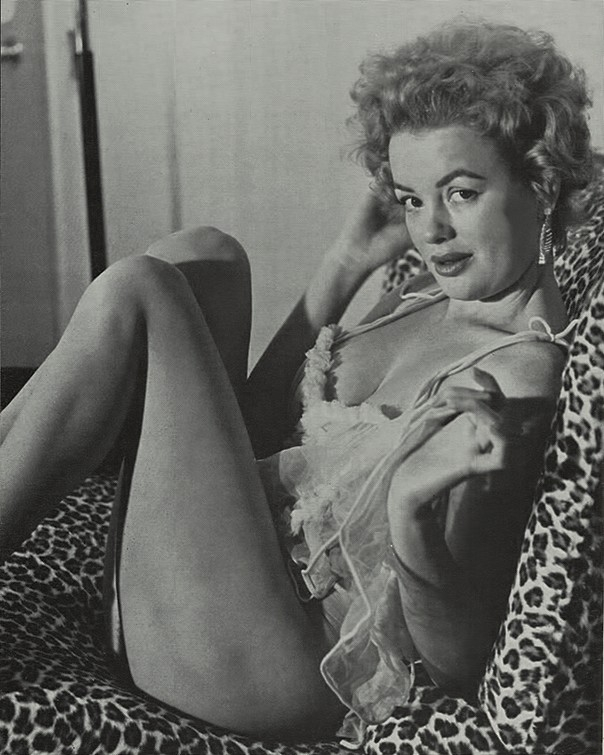
On the Small Screen, She Kept Audiences Guessing
While movies gave her visibility, television let Arline show her range. She scored guest roles on hit shows like Perry Mason and My Three Sons, giving her the chance to trade glamour for grit. These weren’t background appearances—they were evidence that Arline could carry a scene just as well as any of the bigger names of her day.
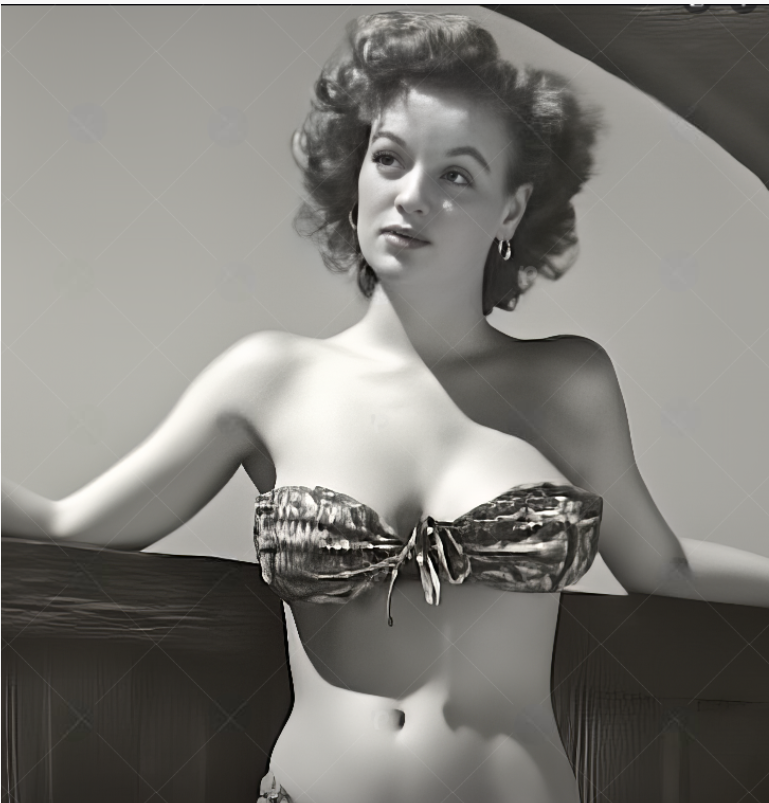
In Sex Kittens Go to College (1960), she appeared alongside Mamie Van Doren, holding her own with sharp wit and stage presence. And her sci-fi role in The Angry Red Planet (1959) showed she wasn’t afraid to break into new genres.
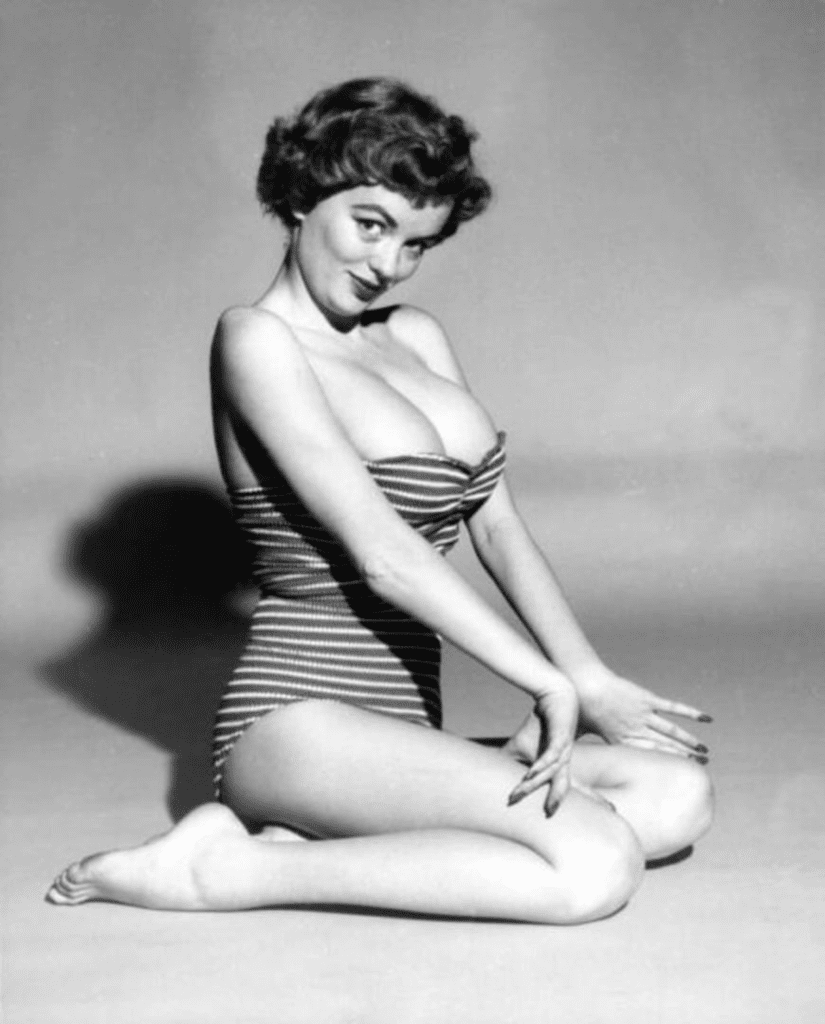
A Personal Life Lived on Her Terms
Unlike many stars of the era who were swept up in the frenzy of fame, Arline carved out a quieter, more stable personal life. She married Wolfgang Wergin, a man outside the Hollywood bubble, and their marriage lasted until his passing in 2006—a rare feat in an industry built on spectacle.
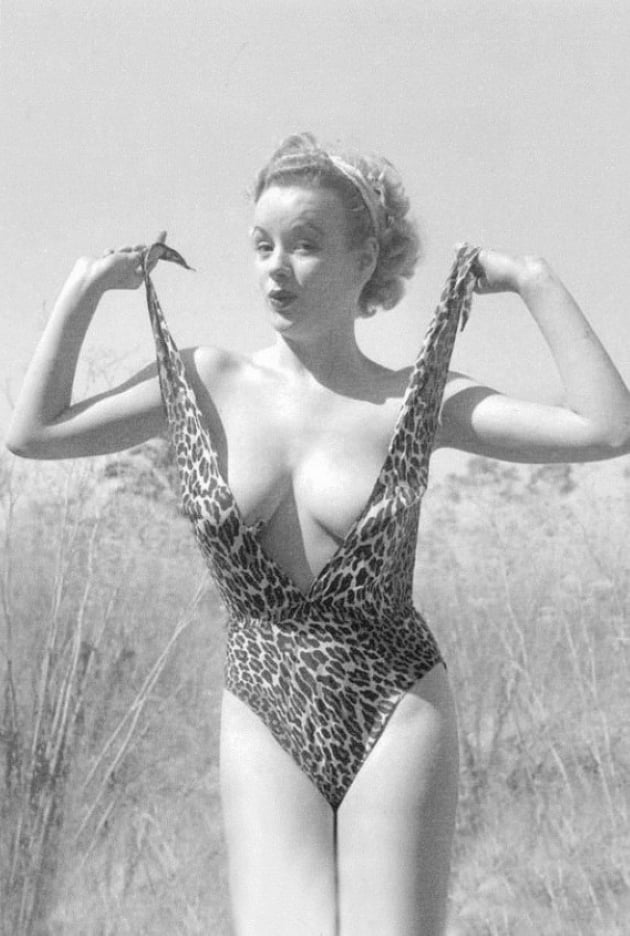
Rumors of flings with famous names like Clint Eastwood and jazz legend Charlie Parker swirled around her, but Arline never made headlines for scandal. She kept her private life guarded and grounded.
And when the time came, she walked away from the spotlight without fanfare. In the late ’60s, Arline transitioned into real estate—a bold move that showcased her business savvy and refusal to be typecast by her looks alone.
Video : Sex Kittens Go to College movie trailer
Living Quietly, But Leaving a Loud Legacy
In her later years, Arline moved to San Pedro, California, embracing a more peaceful life away from the buzz of the industry. But her influence never disappeared.
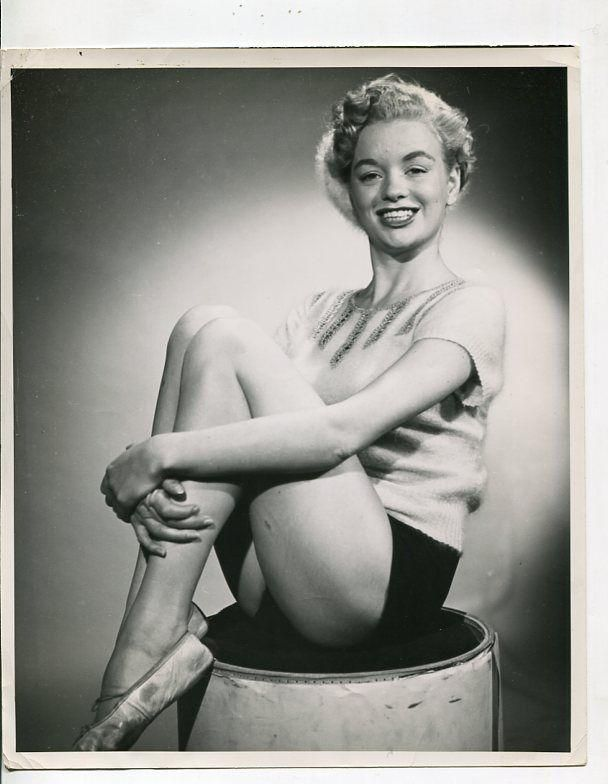
She passed away on September 11, 2018, at the age of 86. And while tabloids and headlines may have shifted focus over the years, her legacy quietly endured.
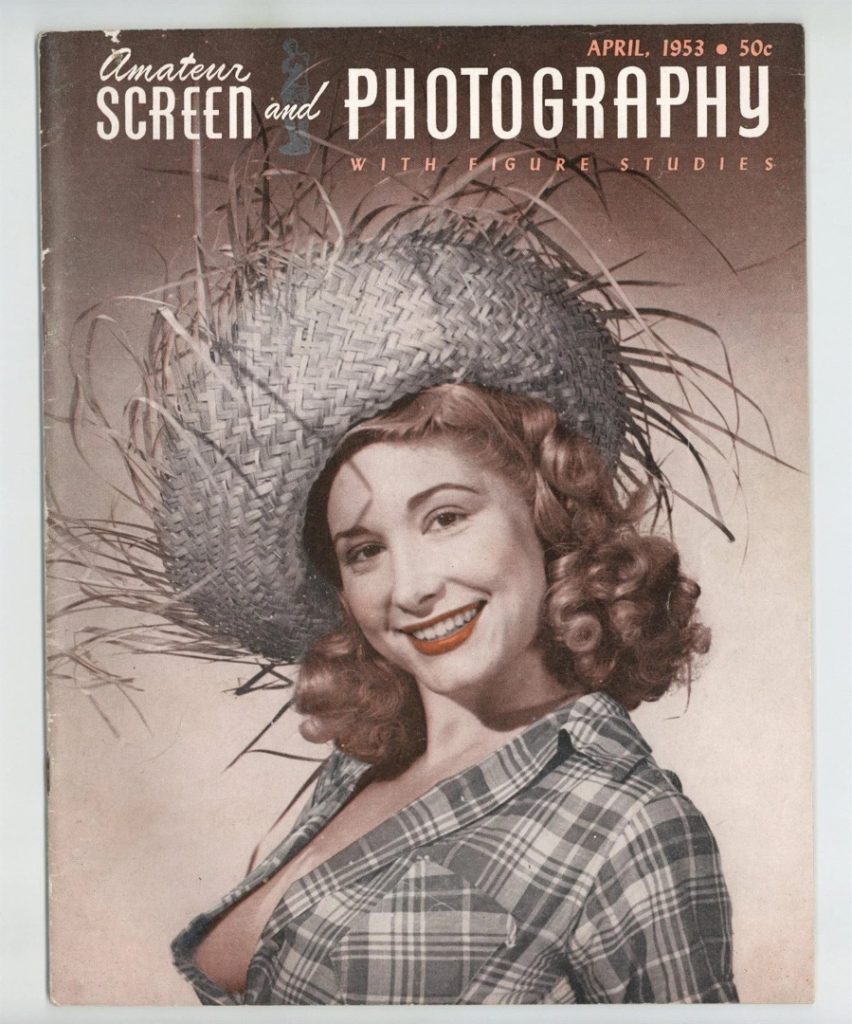
Modern photographers still reference her style. Vintage fashion bloggers share her images. Retro cinema fans post clips of her forgotten films. She became a silent symbol—of strength, of sensuality, and of the power to own your narrative in a world that too often tries to write it for you.
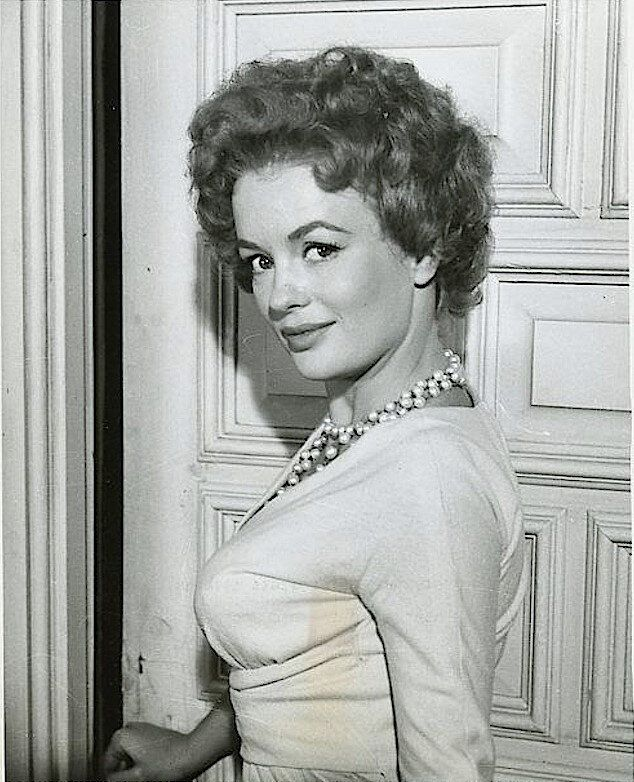
The Marilyn Comparison: Curse or Compliment?
Let’s be real—being compared to Marilyn Monroe wasn’t easy. It opened doors, sure, but it also cast a long shadow. Arline never tried to compete with Marilyn—she simply existed in the same orbit. While the resemblance was striking, Arline brought something different to the table: approachability, independence, and an aura that didn’t rely on fame to feel valuable.
She wasn’t trying to be “the next Marilyn.” She was always Arline Hunter—authentic, grounded, and quietly groundbreaking.
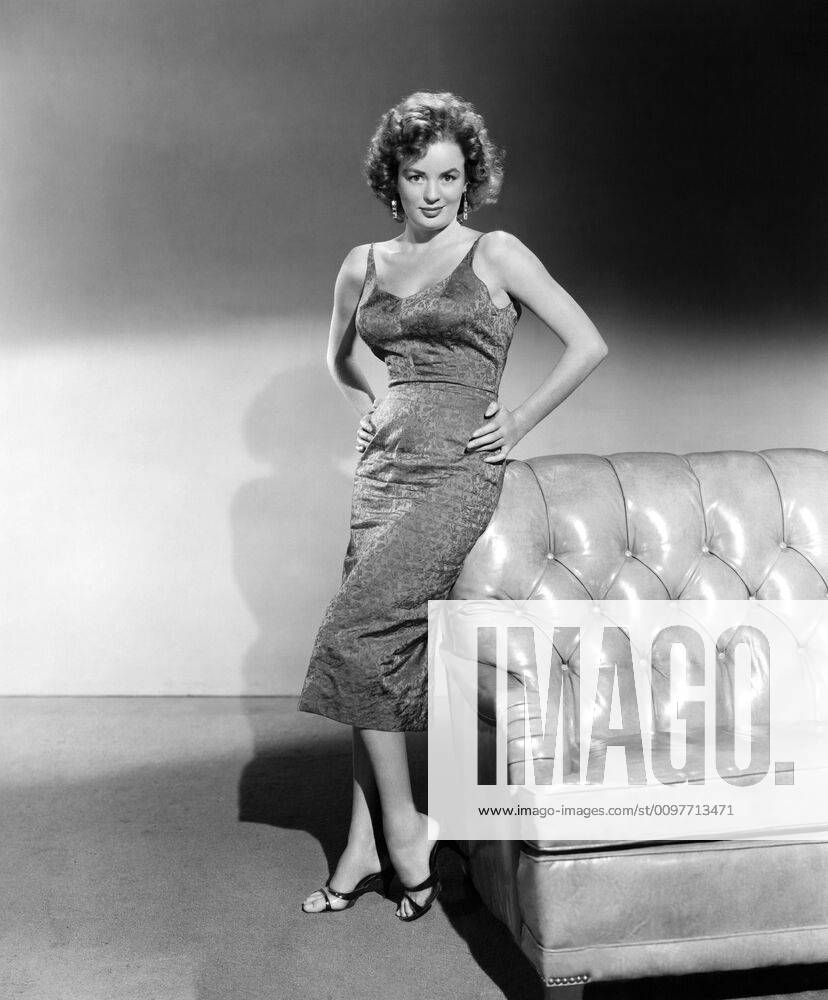
Conclusion
Arline Hunter’s life is a lesson in carving your own space—even when the world mistakes you for someone else. From her Idaho roots to vintage Hollywood stardom, she blended charm, courage, and class. Whether in pin-up poses, black-and-white comedies, or late-night sci-fi flicks, she stood out without needing to shout.
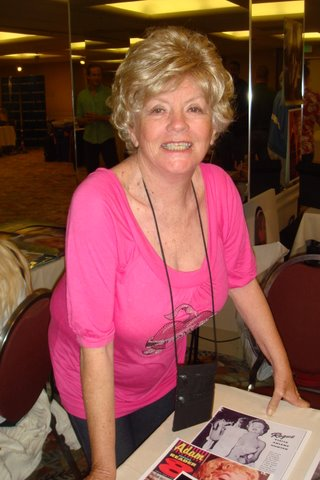
At a time when being a “bombshell” often meant being boxed in, Arline broke the mold. She wasn’t just a Monroe look-alike—she was a trailblazer who used her image to build a career, then walked away when the time felt right.
Her beauty might’ve been what caught the camera’s eye, but it’s her story—bold, smart, and entirely her own—that keeps her unforgettable.